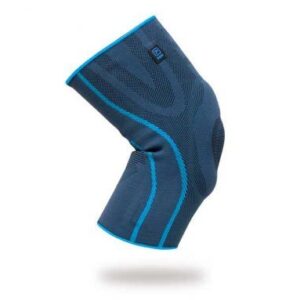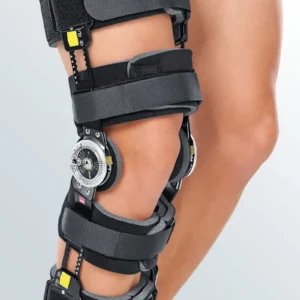Knee Instability
Knee instability refers to a lack of adequate support in the joint, resulting in excessive movements that go beyond what is normal.
Types of Instability: Mechanical - Related to injuries to ligaments, cartilage or other structures that affect physical stability, such as the anterior cruciate ligament or meniscus; Functional - Associated with muscle imbalances or weakness, causing a feeling of instability.
Most common knee pathologies
Symptoms
Sensation that the knee may give way; Recurrent pain especially during physical activity; Oedema (swelling) resulting from associated injuries.
Risk Factors
Individuals with a history of ligament injuries; High-impact sporting activities, especially those involving rapid changes of direction.
Protective Factors
Strengthening exercises for the quadriceps, hamstrings and other muscles around the knee; balance and stability training help to improve motor control; use of orthotics.
Treatment
Specific exercises for strengthening, balance and motor control; In severe cases, ligament repair or reconstruction may be considered; Post-surgical rehabilitation is important for a gradual return to activities.
Information: All the information contained here is merely a summary for a general understanding of the pathologies, highlighting their definition, symptoms, risk factors, protective measures and treatment options.
Consulting a specialised health professional is essential for an accurate diagnosis and an effective treatment plan.
Support and protection for Knee Instability
Discover all the orthotics for Knee Instability
-
Seleccione Opções This product has multiple variants. The options may be chosen on the product page
-
Seleccione Opções This product has multiple variants. The options may be chosen on the product page
-
Seleccione Opções This product has multiple variants. The options may be chosen on the product page
Genumedi PT Elasticated Knee Brace for Traction of the Rotator Cuff
57,00 €Avaliado 0 out of 5( 0 comentários ) -
Seleccione Opções This product has multiple variants. The options may be chosen on the product page
-
Seleccione Opções This product has multiple variants. The options may be chosen on the product page
-
Seleccione Opções This product has multiple variants. The options may be chosen on the product page
-
Seleccione Opções This product has multiple variants. The options may be chosen on the product page
-
Seleccione Opções This product has multiple variants. The options may be chosen on the product page
-
Seleccione Opções This product has multiple variants. The options may be chosen on the product page
-
Seleccione Opções This product has multiple variants. The options may be chosen on the product page
Protect.Co Knee Brace with Flexion and Extension Adjustment
258,00 €Avaliado 0 out of 5( 0 comentários ) -
Seleccione Opções This product has multiple variants. The options may be chosen on the product page
-
Seleccione Opções This product has multiple variants. The options may be chosen on the product page















